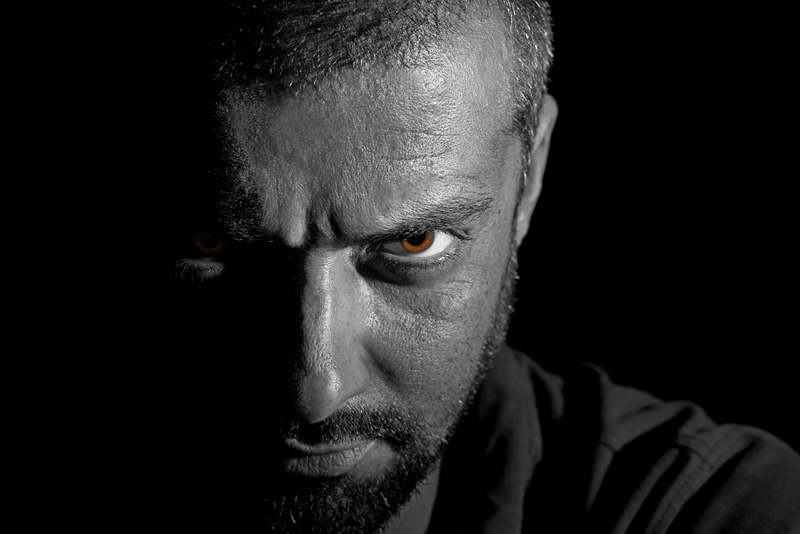Psychopaths' Brains Don't Grasp Punishment, Scans Reveal

The brains of psychopathic violent criminals have abnormalities in regions related to punishment that are not seen in the brains of violent criminals who are not psychopathic, according to new research using brain scans.
These MRI scans suggest that psychopaths don't grasp punishment the same way as other people, the researchers said. This is likely why psychopaths do not benefit from rehabilitation programs, as other violent criminals often do, the scientists report today (Jan. 28) in the journal Lancet Psychiatry.
However, understanding these neurological underpinnings of psychopathy may improve interventions during childhood, when psychopathic behavior emerges as something distinct from ordinary delinquency, the scientists said.
"Psychopathic offenders are different from regular criminals in many ways," said Dr. Nigel Blackwood of King's College London, a senior author on the paper. "Regular criminals are hyper-responsive to threat, quick-tempered and aggressive, while psychopaths have a very low response to threats, are cold, and their aggressive behavior is premeditated."
In previous research, Blackwood has described psychopaths as "cold-hearted" and other violent offenders as "hot-headed." [Top 10 Controversial Psychiatric Disorders]
To understand this difference, Blackwood and his colleagues conducted MRI scans of the brains of 12 violent criminals with psychopathy, 20 violent criminals with antisocial personality disorder but not psychopathy, and 18 healthy people who were not criminals. The criminals had been convicted of murder, rape, attempted murder or grievous bodily harm in the United Kingdom.
While their brains were being scanned, the participants were asked to play a matching game to assess their ability to change their behavior when confronted with rewards and punishment.
Sign up for the Live Science daily newsletter now
Get the world’s most fascinating discoveries delivered straight to your inbox.
In the group of criminals who were psychopathic, the scientists observed lower volumes of gray matter in brain regions involved in empathy, moral reasoning, and the processing of social emotions such as guilt and embarrassment. They also found abnormalities in white matter fibers leading to the prefrontal cortex, in regions involved in learning from reward and punishment.
The other violent criminals performed similarly to the people who were not criminals in this test, the researchers found.
For any person, deciding on how to behave involves generating a list of possible actions, weighing the negative and positive consequences of each, and, hopefully, choosing the behavior most likely to lead to a positive outcome, explained Sheilagh Hodgins, a professor of psychiatry at the University of Montreal, who co-led the study with Blackwood.
"Offenders with psychopathy may only consider the possible positive consequences and fail to take account of the likely negative consequences," Hodgins said. "Consequently, their behavior often leads to punishment rather than reward as they had expected."
So, approaches to rehabilitation that are based on treating the behavior problems of psychopaths similarly to those of criminals who are not psychopathic are bound to fail, the researchers said.
"Offender rehabilitation focuses on changing behavior, but to succeed it must take account of the personality characteristics of the offenders," Hodgins told Live Science. "Those with psychopathy are less empathetic, more callous, more manipulative, and they commit more violent crimes, some of which are premeditated."
What can be done to help psychopaths control their behavior? The researchers suggest focusing on learning-based interventions during childhood, when there still is the potential to alter brain structure and function.
Hodgins said that researchers are "only beginning to learn about the childhood antecedents of the syndrome of psychopathy," but that her group's study provides a hypothesis on the emergence of psychopathy and how to test for it in children.
There is ongoing research trying to understand how to help children with psychopathic characteristics — that is, being callous, unemotional and prone to disruptive conduct — to become more emotionally responsive, Hodgins said. This may include focusing on reward and using negative reinforcement sparingly when interacting with these children.
"Since most violent crimes are committed by men who display conduct problems from a young age, learning-based interventions that target the specific brain mechanisms underlying this behavior pattern and thereby change the behavior would significantly reduce violent crime," Hodgins said.
But the abnormalities of brain structure and function associated with persistent violent behavior are subtle and complex, Blackwood added. And little is still known about how genes and the environment conspire to create a cold, ruthless killer.
Follow Christopher Wanjek @wanjek for daily tweets on health and science with a humorous edge. Wanjek is the author of "Food at Work" and "Bad Medicine." His column, Bad Medicine, appears regularly on Live Science.

Christopher Wanjek is a Live Science contributor and a health and science writer. He is the author of three science books: Spacefarers (2020), Food at Work (2005) and Bad Medicine (2003). His "Food at Work" book and project, concerning workers' health, safety and productivity, was commissioned by the U.N.'s International Labor Organization. For Live Science, Christopher covers public health, nutrition and biology, and he has written extensively for The Washington Post and Sky & Telescope among others, as well as for the NASA Goddard Space Flight Center, where he was a senior writer. Christopher holds a Master of Health degree from Harvard School of Public Health and a degree in journalism from Temple University.










